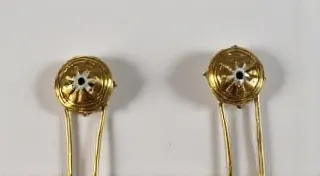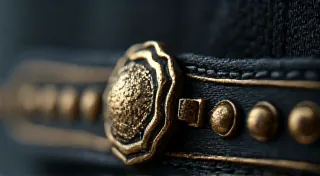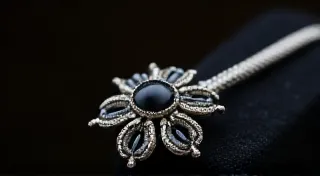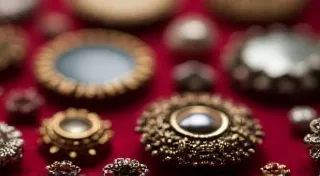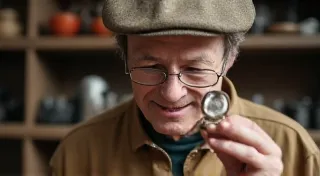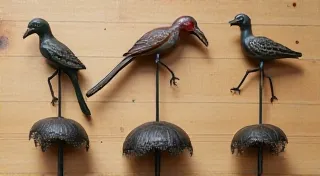Hallmarks and Maker's Marks on Antique Hat Pins: A Deciphering Guide
Deciphering hallmarks and maker's marks is crucial for authenticating and valuing antique hat pins. These tiny inscriptions, often overlooked, hold significant clues to a hat pin’s origin, age, craftsmanship, and sometimes, even its historical context. This article provides a guide to common marks and how to research them, enabling you to not only identify the maker but also understand the story behind these beautiful collectibles.
Why Hallmarks and Maker’s Marks Matter
Just like fine jewelry or silverware, antique hat pins frequently bear hallmarks or maker’s marks. These aren’t merely decorative; they are identifiers. They can tell us:
- Origin: Where the hat pin was manufactured (e.g., England, Germany, United States). Understanding these regional differences is key, and you can learn more about identifying American versus European antique hat pins.
- Maker: The silversmith, goldsmith, or company responsible for its creation.
- Date (Sometimes): While not always definitive, certain marks can suggest a specific era.
- Material: While a hallmark might not always specify material, understanding common marking conventions can provide clues.
- Value: Rarity and the reputation of the maker often directly influence the hat pin’s value. A hat pin by a renowned maker will typically be worth more.
Common Types of Marks
Hallmarks and maker’s marks can vary greatly, but here’s a breakdown of some common types you might encounter on antique hat pins:
1. British Hallmarks
British hallmarks, particularly those from the late Victorian and Edwardian eras, are quite prevalent on antique hat pins, especially those made of sterling silver. They typically consist of several marks:
- Sponsor’s Mark: The maker’s mark, identifying the silversmith or company.
- Standard Mark: Denotes the fineness of the metal (e.g., a lion passant for sterling silver).
- Assay Office Mark: Indicates the assay office where the silver was tested (London, Birmingham, Sheffield, Edinburgh).
- Date Letter: A letter indicating the year of manufacture.
Understanding the combination of these marks requires referencing specialized hallmark guides, which are readily available online and in libraries. These marks can provide insights into a hat pin's authenticity. However, it’s also important to know how to protect your investment, and that includes understanding common signs of counterfeits – you can learn more about how to spot a fake antique hat pin.
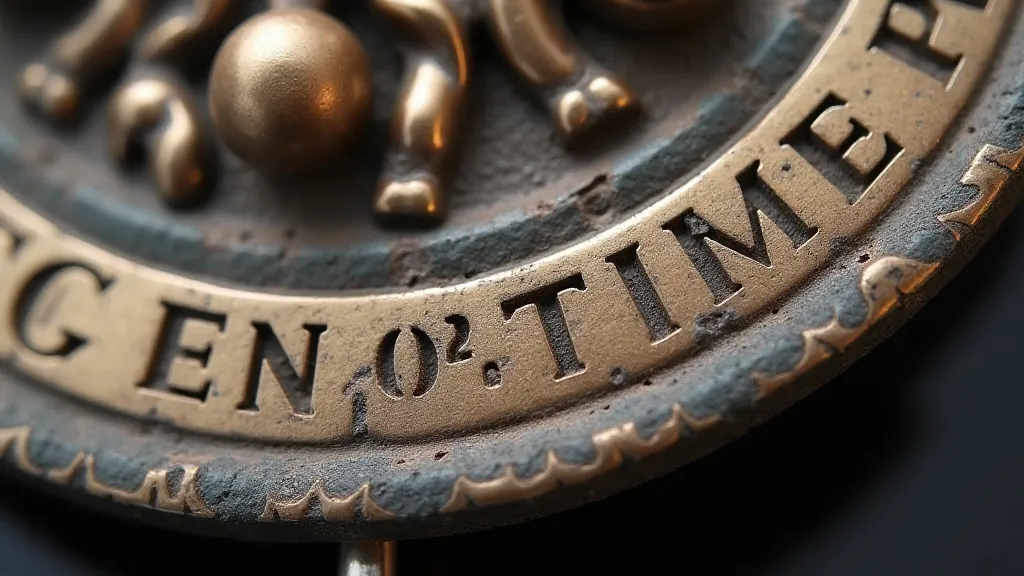
2. American Maker’s Marks
American hat pins are more likely to feature maker's marks rather than comprehensive hallmarks. These marks can be initials, full names, or company logos. Researching these often involves more detective work. The rise of specific styles and designs also influenced the creation of these pieces, particularly during the Art Deco period – a time of bold statements and geometric shapes, as explored in our article on Art Deco era hat pins.
- Initials: Common, but challenging to identify without a reference library.
- Full Names: More specific, providing a better starting point for research.
- Company Logos: Can be distinctive and recognizable, particularly for well-known manufacturers.
3. German and European Marks
European hat pins, especially those from Germany, often bear marks that are unique to their region. They may use different symbols or lettering styles. Researching these requires specialized knowledge of European silver and goldsmith marks. The sourcing of materials and manufacturing processes varied significantly across Europe, affecting the final design and value of these pieces.
Resources for Identification
Identifying maker's marks can be a challenging but rewarding endeavor. Here are some resources that can assist you:
- Online Databases: Several websites compile maker’s mark directories. Examples (though these *should not* be linked): 925-1000.com, Silver Marks Online.
- Reference Books: Books dedicated to identifying hallmarks and maker’s marks are invaluable. Check your local library or antique book dealers.
- Antique Forums and Communities: Joining online forums and communities dedicated to antique jewelry, silver, or hat pins can connect you with knowledgeable collectors who can offer insights.
- Auction Catalogs: Examining auction catalogs from reputable auction houses that specialize in antiques can expose you to a wider range of maker’s marks and provide clues about their value.
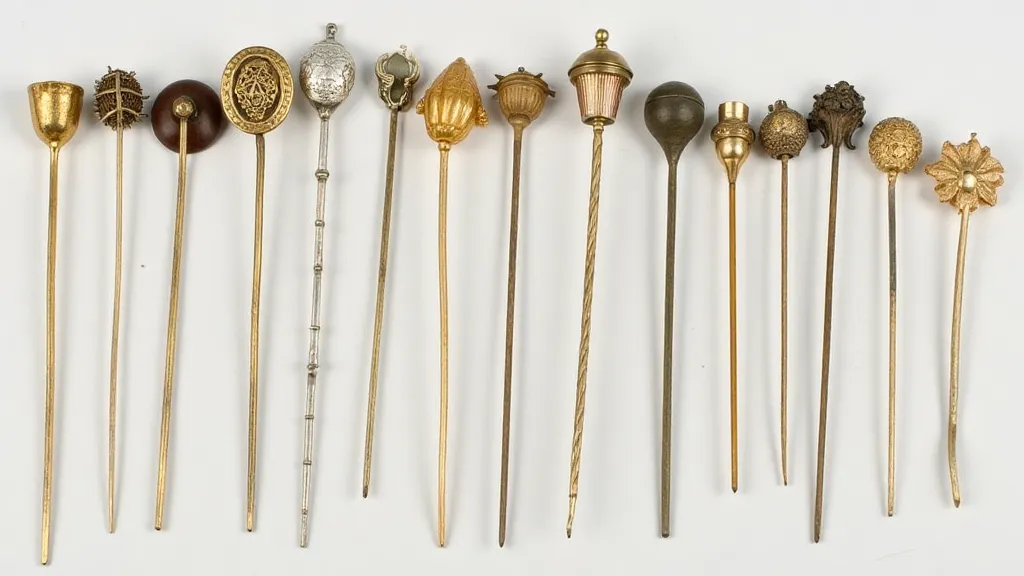
Tips for Research
Here are a few tips to aid in your research:
- Magnification: Use a jeweler's loupe or magnifying glass to examine the mark closely.
- Sketch the Mark: Carefully sketch the mark and note any distinguishing features.
- Record Dimensions: Note the size of the mark relative to the hat pin.
- Consider the Style: The style of the hat pin itself can provide clues to its origin and era.
- Be Patient: Identifying maker's marks can take time and effort. Don't be discouraged if you don't find an answer immediately.
- Understand Provenance: Researching the history of ownership, known as provenance, can significantly add value and insight into a piece. Sometimes, auction catalogs can be an invaluable resource for this.
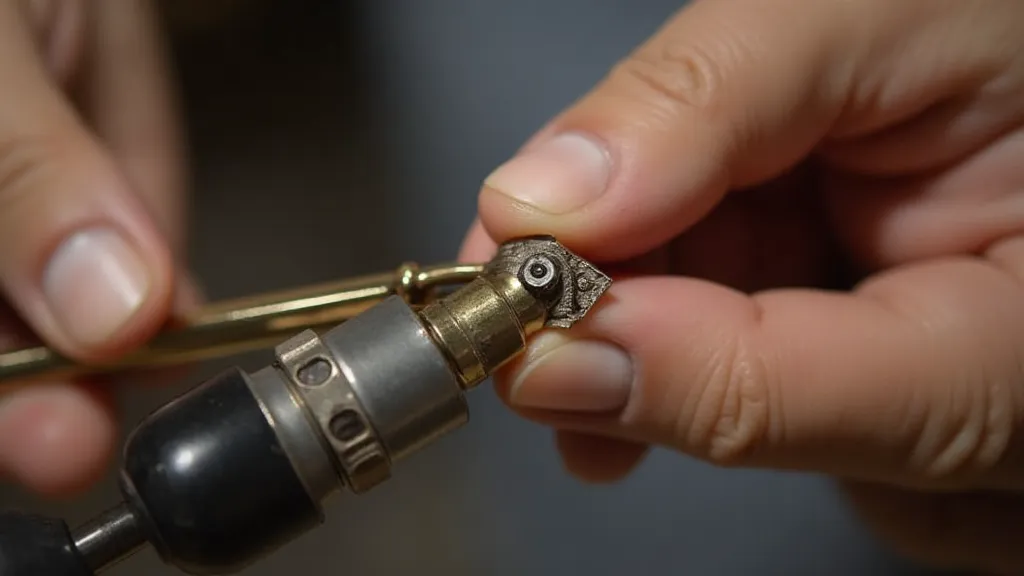
Deeper Dive: Hallmarking Systems Around the World
While British hallmarks are often the most familiar to collectors, hallmarking systems exist across the globe, each with its own unique set of regulations and symbols. For example, French hallmarks often incorporate 'minter's marks' – identifying the mint that tested the silver. German hallmarks frequently include city marks, indicating where the piece was assayed. Even seemingly minor variations in these marks can provide clues to a piece's origin and age.
Beyond the Mark: Contextual Clues
Sometimes, even with the most diligent research, identifying a maker’s mark remains elusive. In these situations, consider contextual clues. The design style, the type of gemstone used (if any), the overall craftsmanship, and even the materials used can offer insights. For instance, the use of specific types of enamel, a technique popular in the late 19th and early 20th centuries, can help narrow down the origin and timeframe of the hat pin.
The Value of Expertise
While this guide provides a foundational understanding of hallmarks and maker's marks, remember that accurately identifying and valuing antique hat pins often requires the expertise of a seasoned professional. Appraisers specializing in antique jewelry and silver are invaluable resources for collectors seeking detailed assessments and provenance research. Finding these pieces can also be easier if you know where to look - many collectors have great success at finding antique hat pins at estate sales and auctions.
Conclusion
Deciphering hallmarks and maker's marks on antique hat pins is an integral part of appreciating and valuing these exquisite pieces of history. With patience, research, and the resources available, you can unlock the secrets hidden within these tiny inscriptions and deepen your understanding of the fascinating world of antique hat pins. The journey of discovery is often as rewarding as the final identification, revealing stories of craftsmanship, artistry, and the enduring allure of a bygone era.
